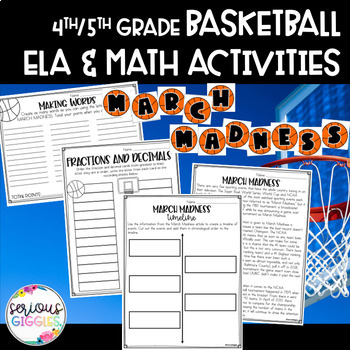Basketball March Madness
- Zip
What educators are saying
Description
March Madness Basketball is just around the corner.
Are you looking for a day full of activities that will keep your students engaged in March and learning about March Madness? This bundle can be completed anytime during the school year, not just around the NCAA basketball National Championship.
This bundle includes 7 different activities:
· Informational Passage about the history of March Madness with a timeline graphic organizer the students will create
· Math Task Cards 4-5th grade ordering fractions and decimals - 2 sets - Fractions and decimals go to hundredths.
· Math Task Cards 3rd grade ordering numbers - 2 sets PLUS an extension activity with problem solving for early finishers.
· Affix Puzzles - have your students match prefixes and suffixes to their meaning - there is a worksheet to correlate where students will show their work and provide example words for these affixes.
· Number of Day - Students will use jerseys to answer math questions in place value, multiplication, division, rounding
· Making Words - Use the letters in MARCH MADNESS to create smaller words and get points based on words created.
· Decimal Bracket - Use the decimals in the bracket to choose the greatest decimal and have it advance onto the next round.
This bundle can be used as a Basketball room Transformation. It can be used year-round, as there is not a single activity that has to be done in March.
Look at the Preview to see all activities included!
Related Products
☆ Football Themed Activities - Super Bowl Bundle
⇒Feedback and Followers
Click the Green ★ to follow my store and get notifications of new product launches and freebies! Did you know that you can receive credit toward future TpT purchases by reviewing this product? If you enjoy this product, please leave a review at the product page or through "My Purchases" under "My Account" at TpT. Ratings make the TpT world go round! :-)
⇒Terms of Use
©Heather Campbell, at SeriousGiggles
By purchasing and/or downloading this electronic file, you agree to the terms of use as stated below. For personal use/single classroom use only. No part of this document may be distributed, posted on the internet, copied, sold, or edited without direct permission from the author. Violations are subject to the penalties of the Digital Millennium Act. To purchase additional sharing licenses, please visit my store. All contents of this document are under copyright protection including all text, graphics, contents, and fonts. All graphics and fonts are also protected by copyright from their original author/artist.
Thank you so much for visiting my store!




